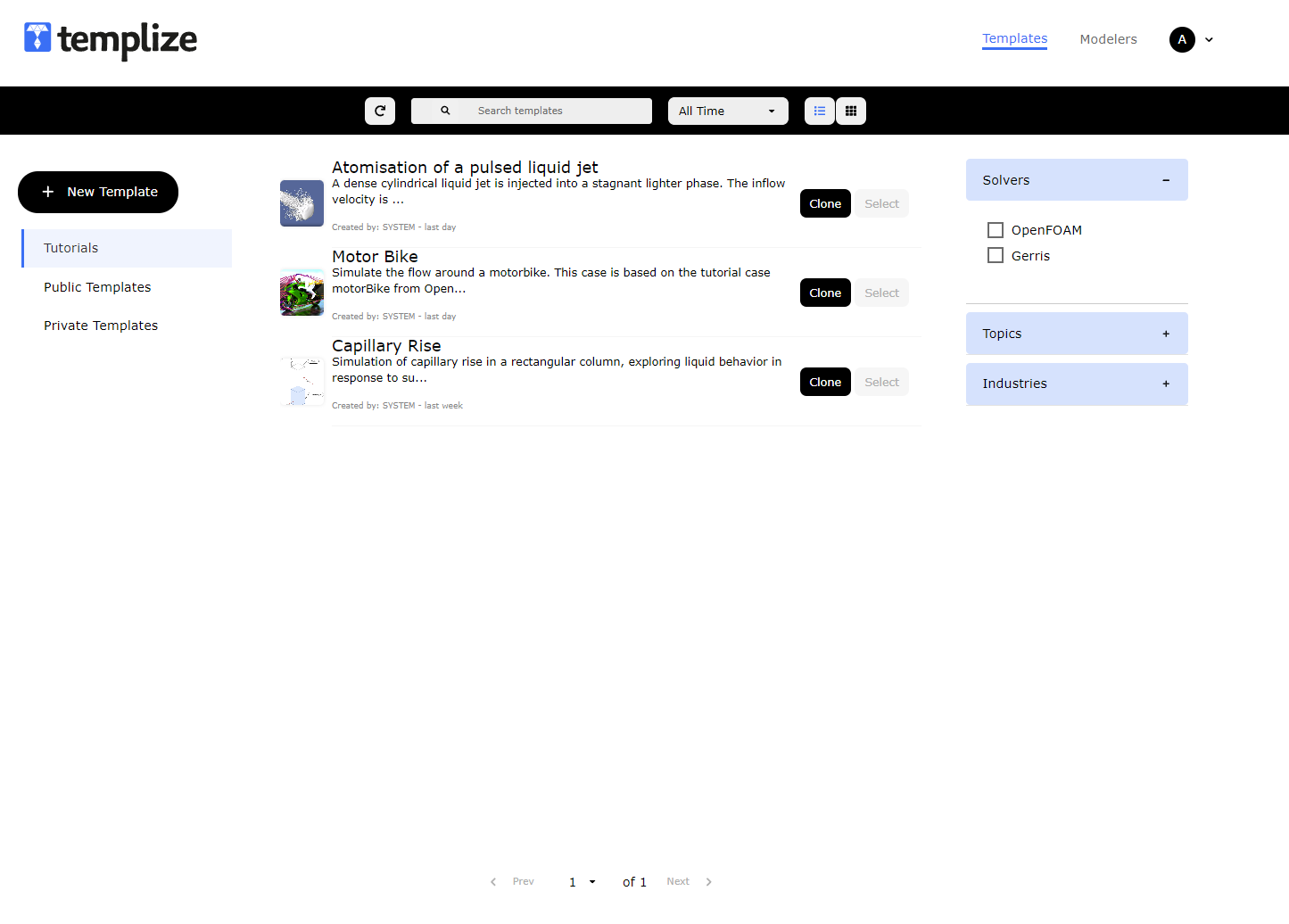Understanding Templates in Templize
Overview
Templates are a foundational element in Templize, acting as the blueprints from which modelers are created. They represent pre-configured setups that encapsulate the complexities of computational fluid dynamics (CFD) simulations, making the process more accessible to engineers.
Public and Private Templates
The Templize platform offers a dual-structure library consisting of 'Public Templates' and 'Private Templates'. Public Templates are available to all users within the Templize community, fostering collaboration and knowledge sharing. Private Templates, on the other hand, are private to individual users, allowing for personal customization and experimentation.

Role of Templates
Templates serve as the origin point for modelers. They contain the definitions of parameters and the method by which these parameters should be integrated into the simulation case files. This setup is crucial because it:
-
Streamlines the Simulation Process: By providing a template with predefined parameters, the process of setting up a simulation is greatly simplified. Engineers can focus on the specifics of their simulation without delving into the initial setup complexities.
-
Encapsulates Complexity: Templates abstract away the intricate details of case file creation, which can be a barrier for engineers who are not well-versed in the nuances of open-source solvers.
-
Ensures Consistency: Using templates guarantees that the foundational setup of simulations remains consistent, leading to more reliable and comparable results.
-
Enhances Accessibility: By encapsulating case complexities, templates make CFD simulations more accessible to a broader range of engineers, regardless of their expertise in the software.
Interaction with Templates
The interface, as depicted in the image, shows a list of available templates with options to 'Clone' or 'Select'. Cloning a template allows users to create a personal copy, which they can then modify to suit their specific requirements. Selecting a template likely allows users to view more details or to initiate a new simulation using the chosen template.